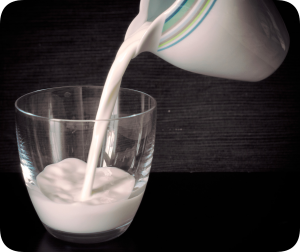 Although milk was a staple of the American diet throughout the 20th century, today’s consumers don’t drink nearly as much of it as they did in the past. In 2018 Americans each drank an average of 146 pounds of fluid milk, a category that includes everything from skim milk to heavy cream. While that’s still quite a lot of dairy, it also represents a 26 percent decrease in consumption since 2000. Along with this declining demand, milk companies have also faced unpredictable pricing schemes as well as increasing competition from vertically integrated retailers and dairy alternatives.
Although milk was a staple of the American diet throughout the 20th century, today’s consumers don’t drink nearly as much of it as they did in the past. In 2018 Americans each drank an average of 146 pounds of fluid milk, a category that includes everything from skim milk to heavy cream. While that’s still quite a lot of dairy, it also represents a 26 percent decrease in consumption since 2000. Along with this declining demand, milk companies have also faced unpredictable pricing schemes as well as increasing competition from vertically integrated retailers and dairy alternatives.
All of this bad news has contributed to the bankruptcy of the nation’s two largest milk processors: Dean Foods and Borden Dairy. These companies purchase milk from dairy farmers and employ processes like pasteurization to create consumer-safe products. But declining demand as well as volatile prices throughout the dairy industry have dealt a lot of damage to thin-margin companies like Dean and Borden. The price of milk centers around its intended use: for example, fluid milk for drinking has a different price than milk used for making butter or cheese. This separate pricing system is supposed to prevent spikes in dairy prices for different varieties of milk. Due to the complexities of American milk-pricing, however, the price of fluid milk has risen as demand for other dairy products increases. “There’s an old adage in the dairy industry that only five people in the world know how milk is priced in the US, and four of them are dead,” said the Farm Bureau’s chief economist John Newton.
What’s more, milk processors have lost a lot of business to retailers like Walmart and Kroger that have started producing their own milk. When Walmart opened a milk-processing plant in 2018, it took away 95 million gallons in business from Dean Foods. Milk producers have also lost ground to dairy alternatives like oat milk, which over the past year has seen retail sales skyrocket by 600 percent. But while plant-based milks earned nearly $2 billion in 2019, cow’s milk producers brought in $12 billion over the same period. Still, the dairy alternative market is growing too fast for many in the industry to ignore. After emerging from bankruptcy protection, Borden plans to start exploring lactose-free milk and other less sugary dairy products.
Questions:
- What major factors led to the bankruptcy of milk processors like Dean Foods and Borden Dairy?
- Do you think regulators should revise the complicated rules surrounding milk prices? Why or why not?
Sources: Alana Semuels, “Milk Has Long Been a Staple of American Life. But Now, the Dairy Industry Is in Trouble,” Time, January 9, 2020; Danielle Wiener-Bronner, “Milk 2.0: How the Dairy Industry Plans to Save Milk,” CNN, January 10, 2020.
